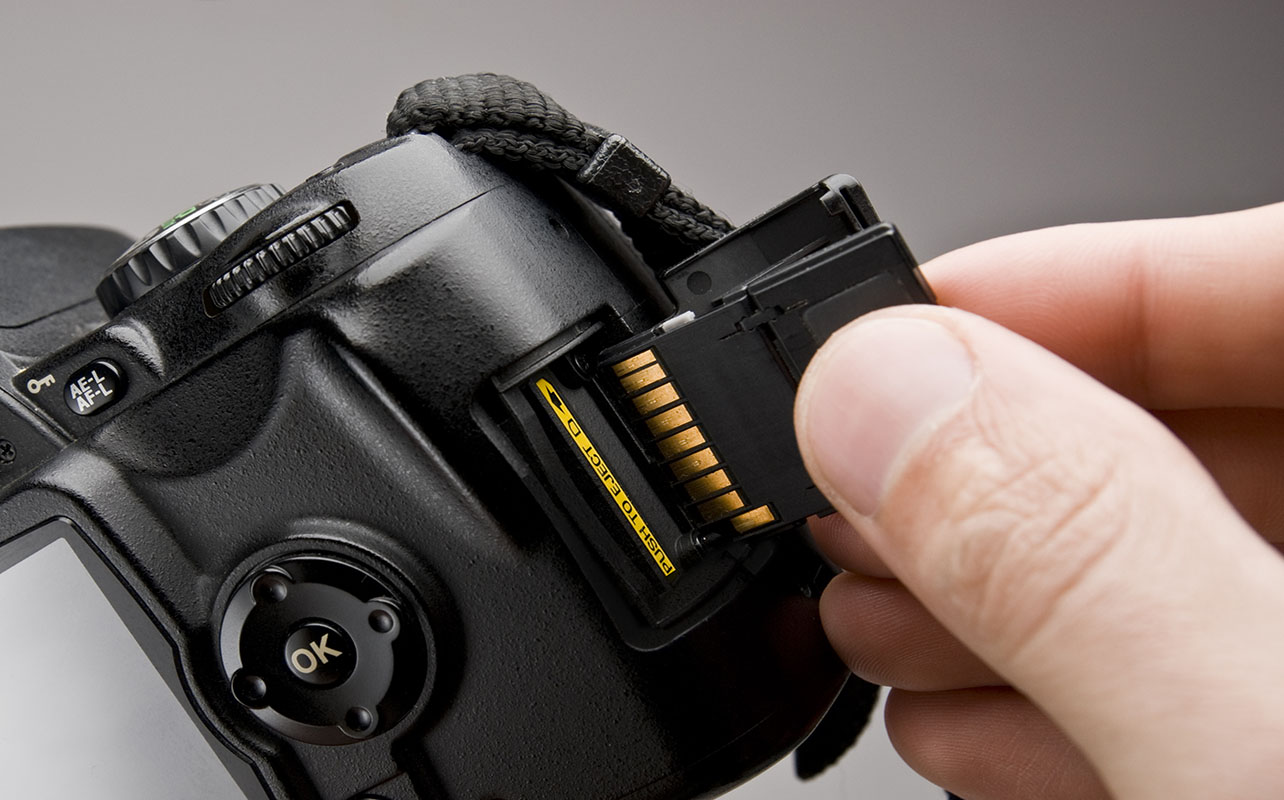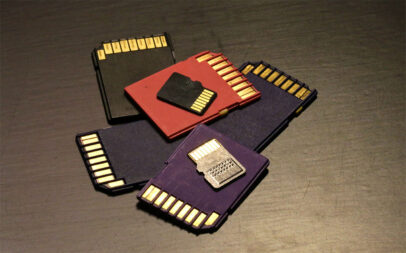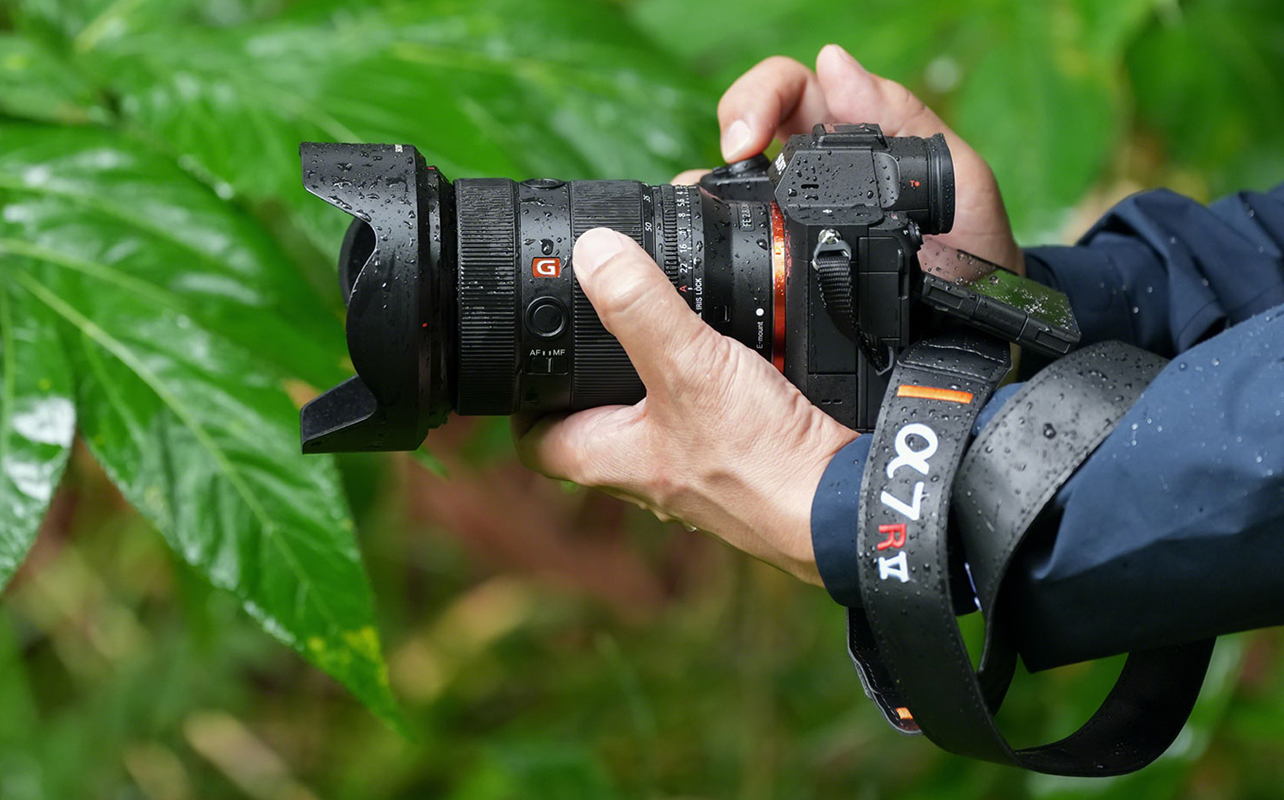
Whether you’re trying to capture your next travel vlog in 4K, or just need something for casual photography, getting memory card is a lifesaver. Choosing between different formats (SDHC vs SDXC vs SD) for SD-card compatible devices can make or break your experience. But what do these acronyms mean? In this guide, we’ll walk you through what makes each type of card different—from storage capacity and speed to compatibility and use cases. By the end, you’ll know exactly what to look for and which card best suits your device and needs.
What is an SD card?
An SD (Secure Digital) card is a portable storage device designed to hold digital data. Think of it as the compact, adventure-seeking cousin of a USB stick. The original SD cards were first introduced in the early 2000s and quickly became the go-to for storing photos, videos, music, and documents. They’re durable, removable, and compatible with a wide range of devices—from digital cameras and camcorders to laptops and even gaming consoles.
But here’s the catch: they top out at just 2GB of storage. These days, that’s not even enough for a weekend’s worth of pictures or a single four-minute HD video clip. That’s where newer versions like SDHC and SDXC step in.
What is an SDHC card?
SDHC (Secure Digital High Capacity) cards came in to solve the “not enough space” problem of standard SD cards. Supporting 4GB to 32GB, these cards are perfect for devices that handle high-resolution photos or HD video. Most point-and-shoot cameras, camcorders, and even some dash cams use SDHC cards, making them a solid middle-ground choice. Just make sure your device supports SDHC—it’s usually listed in the manual or tech specs.
If you’re comparing SD card vs SDHC, it boils down to this: SDHC gives you more room for your files. If your device is newer than 2010, chances are it supports SDHC.
What is an SDXC card?
SDXC (Secure Digital eXtended Capacity) cards are the heavy hitters. They pick up where SDHC leaves off, offering storage from 64GB all the way up to a whopping 2TB. That’s enough for thousands of RAW photos, hours of 4K/8K video, or your entire music collection (and then some). These are the go-to cards for professional photographers, drone operators, and videographers who work with large files and need speed and reliability.
SD cards vs microSD cards

If you’re using a microSD card (for phones, drones, or handheld gaming devices), know that the same rules apply: microSD, microSDHC, and microSDXC follow the same classification system—just in a smaller format. Learn more about the difference between an SD card vs. microSD card.
Comparing SD, SDHC, and SDXC
Let’s dive deeper into the key differences across SD card vs SDHC vs SDXC:
Storage capacity
When it comes to storage size, each card type scales up dramatically. Standard SD cards range from 128MB to 2GB, SDHC cards offer 4GB to 32GB, and SDXC cards go from 64GB up to a massive 2TB. That’s a huge range—and it can make a big difference depending on what you’re doing. If you’re shooting 4K video or capturing hundreds of high-resolution photos in RAW format, SDXC is your best friend. But for everyday use like casual photos or school projects, SDHC is usually more than enough.
File system formats
Each SD card type uses a different file system, which affects how your device stores and accesses data. SD cards use FAT16, which limits them to files around 2GB. SDHC cards use FAT32, which supports files up to 4GB. SDXC cards use exFAT, which allows for much larger file sizes. If you’re recording long video clips—especially in 4K—choose an SDXC card. Otherwise, your videos might get chopped into smaller chunks or might not record at all.
Speed classes and performance
Speed matters when recording video, shooting in burst mode, or transferring large files. Here’s the breakdown:
- Standard Speed Class is labelled C2, C4, C6, or C10, indicating minimum write speeds (e.g., Class 10 = 10MB/s).
- UHS Speed Class (U1, U3) stands for Ultra High Speed and appears on SDHC and SDXC cards. U3 offers at least 30MB/s which is ideal for 4K.
- Video Speed Class shows the minimum write speed of a memory card for video recording, with classes V10 (10MB/s), V30 (30MB/s), V60 (60MB/s), and V90 (90MB/s). They help record high-resolution videos smoothly, such as 4K and 8K.
A Class 10 card might be good enough for HD video, but for 4K content creation, go with a U3 or V30+ card to keep things smooth.
Compatibility
Not all cards play nice with all devices. Here’s how compatibility typically works: SD-only devices won’t support SDHC or SDXC cards. Devices that support SDHC can use both SD and SDHC, but not always SDXC. On the other hand, SDXC-compatible devices can use all three types.
Always check your device’s user manual or memory card slot label before getting one. Compatibility depends on both the hardware and the file system the card uses.
Cost
As you might expect, more storage and faster speeds can lead to higher prices. But the good news? Memory cards are far more affordable now than they used to be, typically ranging from $10 for basic models to $200 or more for high-capacity cards with faster transfer rates. Several factors influence cost:
- Higher capacities like 128GB or 512GB
- UHS-II or UHS-III speed ratings
- Video Speed Class (e.g., V90 for ultra-HD video)
At a glance: SDHC vs SDXC vs SD
Here’s a quick comparison table to help you see the differences between SD, SDHC, and SDXC formats at a glance. Use this chart to get a feel for which card might suit your device, storage needs, and workflow.
| Format | Capacity | File System | Speed | Device |
|---|---|---|---|---|
| SD | 128MB – 2GB | FAT12/16 | Class 2–10 | Oldest devices only |
| SDHC | 4GB – 32GB | FAT32 | Class 2–10, UHS-I | Most mid-range devices |
| SDXC | 64GB – 2TB | exFAT | UHS-I/II, V10–V90 | Most modern/pro devices |
Use cases: which card suits your needs?

Not all users need the same kind of memory card. Whether you’re recording a birthday party or filming a documentary, here’s how to match your card to your needs.
Casual users
Taking snapshots of your kids, recording the occasional HD video, or backing up files from your laptop? A standard SD or SDHC card will do just fine. SD cards are still handy for older cameras or camcorders, while SDHC cards (8GB–32GB) offer better capacity and wider compatibility for everyday devices.
Enthusiasts and hobbyists
If you’re into photography or content creation and using a mid-range DSLR or mirrorless camera, you’ll want more speed and room. SDHC or SDXC cards with UHS-I and a Class 10 or U1 speed rating are ideal. A capacity range of 32GB to 128GB offers flexibility without overkill.
Professionals
Are you filming 4K weddings, flying a drone for client shoots, or capturing fast-action wildlife in RAW? SDXC cards starting at 128GB, with UHS-II or UHS-III speeds and V30 or higher video speed ratings, are built to handle the demands of high-performance gear. Dual-slot backups and faster read speeds also help streamline post-production.
Tips for choosing the right memory card
A little homework before buying your SD card can save a lot of headaches down the road. Here’s what to keep in mind:
1. Check device compatibility before buying
Not all devices support all SD card types. Before clicking “add to cart,” check your camera, laptop, or console’s spec sheet to see whether it supports SD, SDHC, or SDXC. Also, look for logos or labels near the card slot. Choosing an incompatible card might mean wasted money—or worse, lost footage.
2. Choose a speed class that matches your task
Match your memory card’s speed to your activity. Taking basic photos? A Class 4 or Class 10 card should be fine. Filming in Full HD? You’ll want at least UHS-I U1. Recording in 4K or using burst mode? Go for UHS-I U3 or higher, and look for V30 or V60 if you’re working with professional video.
3. Buy from trusted retailers to avoid counterfeit cards
There’s no shortage of knockoffs online. Counterfeit cards often misrepresent their capacity or fail completely after a few uses. Stick to reputable sellers for peace of mind, warranty support, and the confidence that your card won’t flake out mid-shoot.
4. Back up data regularly to avoid data loss
Even the best cards can fail. That’s why it’s smart to back up your files regularly—especially after a big shoot or trip. Use cloud services or external drives to save your photos and videos elsewhere, just in case your SD card decides to retire unexpectedly.
Your perfect match: pick the right SD card for your needs
Looking for a memory card for your device? Find one that fits your needs. For basic tasks and older devices, SD or SDHC is a good choice. This format offers sufficient storage capacity and speed for common applications such as photo storage, document transfer, and light video recording. If you need more storage or saving higher quality photos/videos, SDHC or SDXC will serve you well. It offers higher capacities compared to standard SD cards. For top-tier performance, massive storage, and pro-level media, SDXC is king. Its ability to support capacities up to 2TB makes it ideal for professional photographers and videographers who require extensive storage for high-resolution images and 4K video.
Shop Best Buy Canada’s wide selection of SD, SDHC, and SDXC cards.
This article was drafted using AI technology and then reviewed, fact-checked, and revised by a member of our editorial team.






Great comparison of SD, SDHC, and SDXC — your explanations on capacity limits, speed ratings, and compatibility really help clarify for users who are unsure which card to buy.
At Photo Background Remove
, we often edit photos from devices using these cards, so understanding their differences helps ensure we get the best image files delivered to clients. Thanks for sharing this!